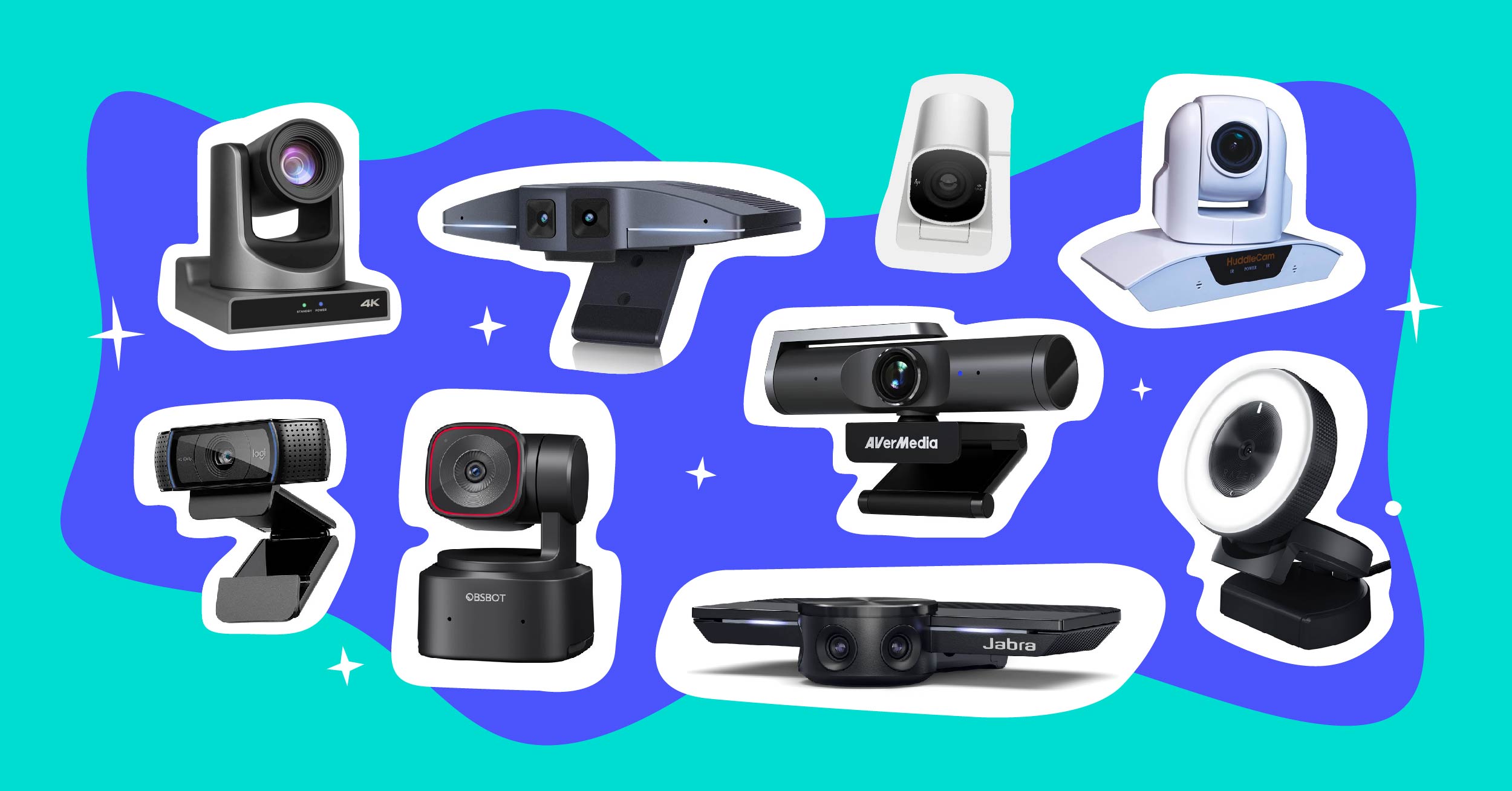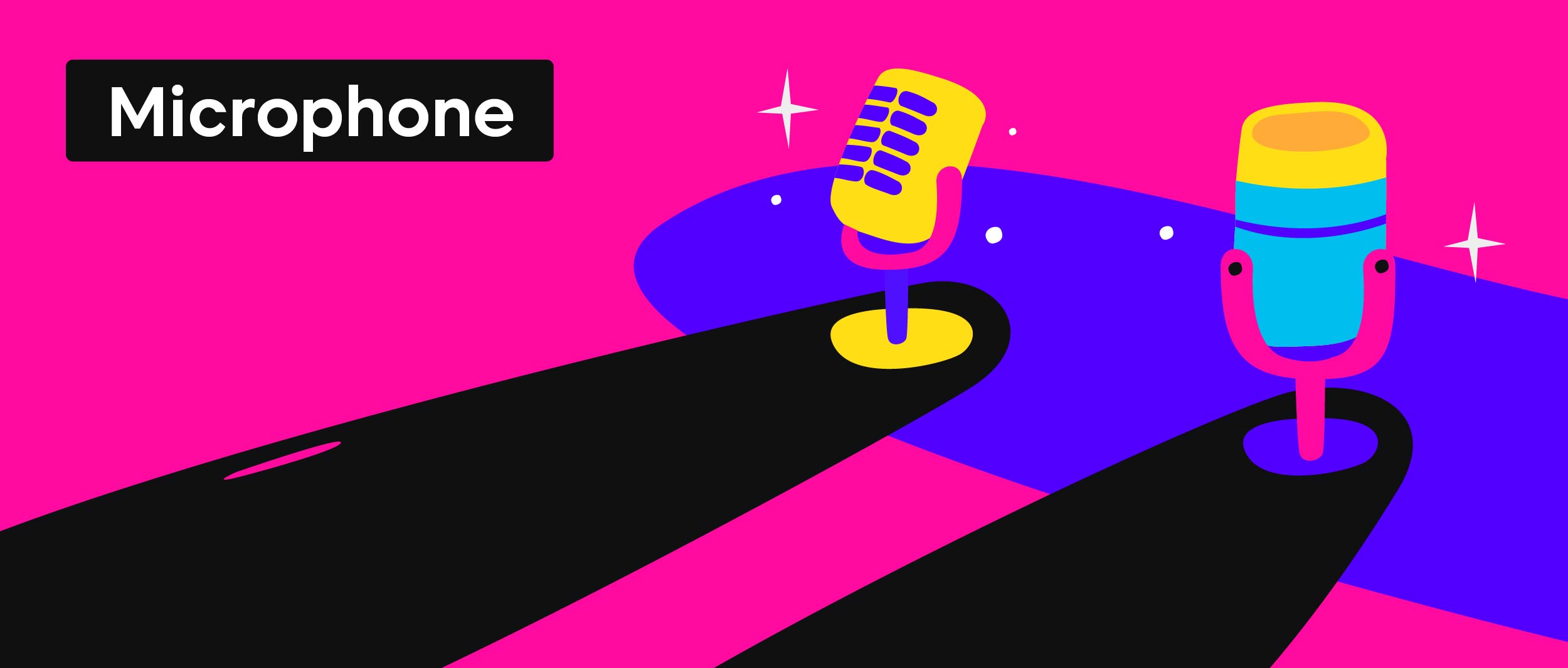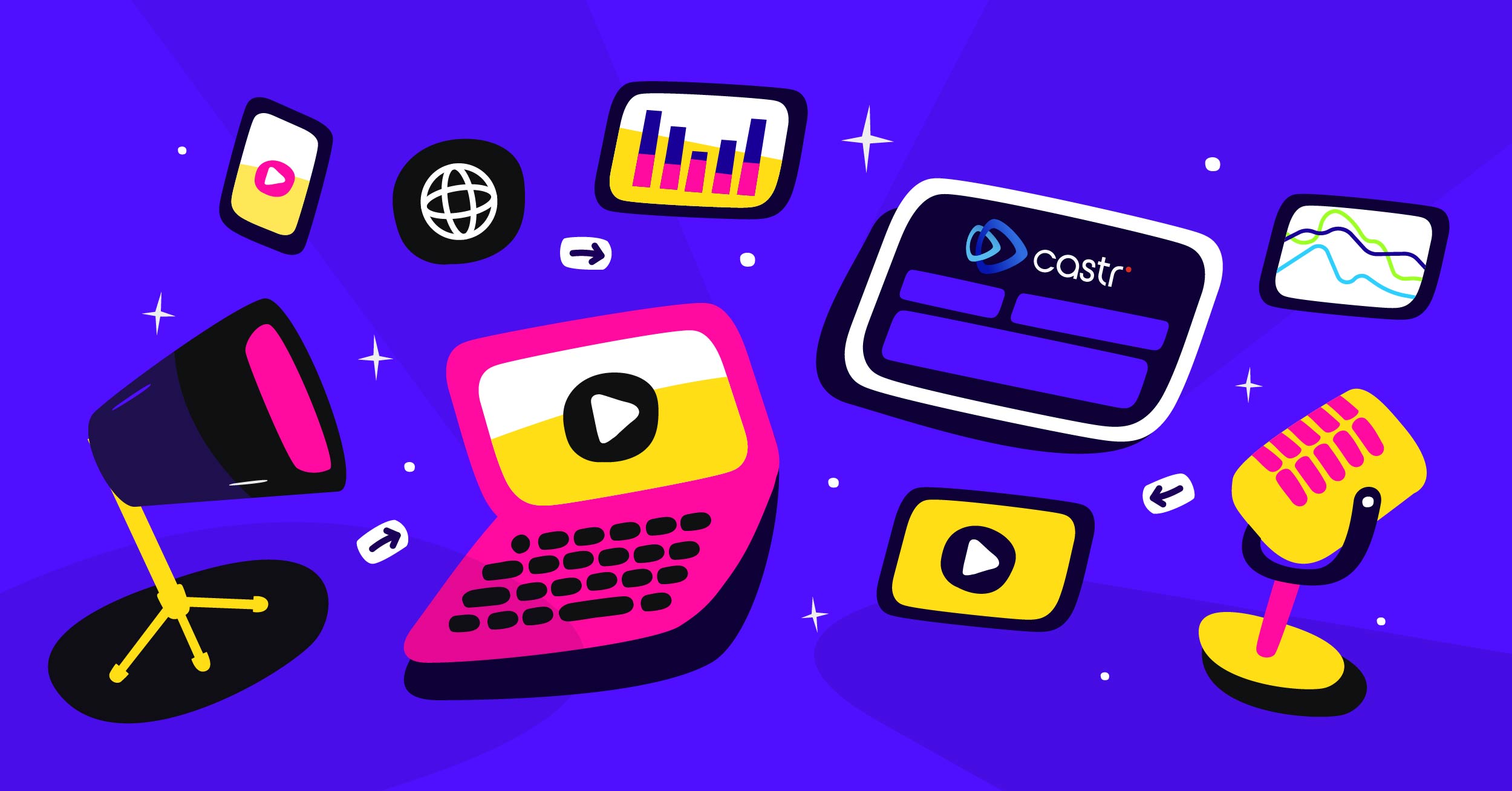Live streaming has seen a significant rise in popularity. People are turning to it for communication, entertainment, and even business. However, streaming high-quality video files can be a challenging task, especially when it comes to maintaining video quality. This is where the role of video encoding comes into play. Encoding is a process that compresses video files, making them easier to stream without compromising on quality. You can use either a hardware or software encoder to carry out this process.
Hardware and software encoders serve the same purpose. They convert raw video inputs into digital files that can be streamed online. The choice between the two can greatly impact the quality of your live streams, the efficiency of your streaming setup, and the processing power of your laptop or desktop computer.
In this blog post, I will discuss the details of these two types of encoders, including their features, performance, cost, and more. I aim to help you choose the best encoder for your live-streaming needs.
What is Video Encoding?
Video encoding is the process of converting digital video files from one format to another. It’s done to make the files more compatible with different types of media players and devices. During this process, the video file is compressed to reduce its size without losing too much quality. This makes it easier to stream or download the video. Encoding also involves setting the video’s resolution, frame rate, and bitrate. Different encoding formats are used for different purposes. For example, some are better for streaming, while others are better for storing on a disk.
What is a Video Encoder?
A video encoder is a tool that converts raw video files into a digital format. This process, known as video encoding, involves compressing the video data to make it easier to transmit over the Internet.
Video encoders can be:
- Hardware-based
- Software-based.
Why is Encoding Important in Livestreaming?
Encoding is a significant part of live streaming. It ensures that the video content can be transmitted over the internet efficiently and viewed on different devices. Without encoding, professional-quality video for live streaming would not be possible. The video encoding process is important for
Efficient Data Transmission: Encoding compresses video data. It makes the video file smaller and easier to transmit over the Internet. This is important for live streaming, as it allows the video to be sent in real-time. With encoding, the large raw video data would be easier to stream.
Quality Control: Encoding also allows for control over the quality of the livestream. By adjusting the bitrate, resolution, and frame rate, you can balance the quality of the video with the speed of your internet connection. This ensures viewers can watch the livestream without buffering, even with less bandwidth.
Device Compatibility: Another important aspect of encoding is ensuring device compatibility. Different devices and media players support different video formats. Encoding the video into a widely supported format makes sure that it can be viewed on various devices, from smartphones to smart TVs.
Bandwidth Management: Encoding helps in managing bandwidth. By compressing the video data, it reduces the amount of bandwidth needed to transmit the video. This is especially important for viewers with limited internet data plans. Encoding uses less data to make live streaming more accessible to a wider audience.
Viewer Experience: Encoding plays a key role in the viewer experience. A well-encoded video will load quickly, play smoothly, and look good. This can distinguish between a viewer staying to watch your livestream or leaving due to technical issues.
What is Hardware Encoding?
Hardware encoding involves a hardware encoder whose sole purpose is to encode video and audio for live streaming or recording. Unlike its software counterparts, such as OBS Studio or SW Encoder, its dedicated hardware is built-in to handle this task.
Most hardware encoders can manage multiple video sources, including webcams, capture cards, and remote guests. This makes them the best choice for broadcasting from multiple cameras. They also offer a broad range of customization options for your screen settings.
Another advantage of hardware encoders is their lower latency. They are more reliable than encoding software running on a computer. This is why most people find it easy to live-stream programs.
5 Popular Hardware Encoders
Here are five popular hardware encoders that are widely used for live streaming and recording:
1. Blackmagic Design ATEM Mini Pro: This hardware encoder is a favorite due to its ability to handle multiple cameras. It has built-in live streaming software and capture cards, making it a reliable choice for broadcasting.
2. Teradek VidiU Go: Known for its lower latency, this dedicated hardware encoder can encode video sources from remote guests. It offers customization options and is super easy to use.
3. Epiphan Pearl-2: This broad-range hardware encoder is designed solely to provide high-quality live streaming. It has a built-in SW encoder and is compatible with OBS Studio.
4. Magewell Ultra Stream HDMI: This hardware encoder is the best choice for those who prefer free and easy-to-use encoding software. It supports YouTube streaming and offers settings for screen and webcam recording.
5. AJA HELO H.264: This hardware encoder is known for its audio and video encoding capabilities. It’s a computer running encoder with programs that make live streaming and recording a breeze.
Pros
- Most hardware encoders come with multiple inputs. It allows you to connect multiple cameras or other video sources.
- Hardware encoders have lower latency, providing a smoother streaming experience.
- Hardware encoders often come with built-in capture cards, eliminating the need for a separate computer running encoding software.
- The dedicated hardware of encoders provides a broad range of customization options for audio and video settings.
- For most people, using a hardware encoder is super easy and the best choice for broadcasting on platforms like YouTube, as it is free from the complexities of SW encoder programs and screen recording.
Cons
- Hardware encoders can be expensive, making them a significant investment for small businesses or individuals.
- They are not as flexible as software encoders, as they are designed for a specific purpose and cannot be easily updated or changed.
- Hardware encoders require physical space and proper maintenance, which can be challenging for those with limited resources.
What is Software Encoding?
Software encoding is a process that converts video data from one form to another using software. The encoding software takes raw video data and uses a codec. A codec is a program that shrinks large video files without losing quality. This makes the video easier to stream or download. The software changes the video’s file format, bitrate, and resolution. It adjusts these factors to match the device’s capabilities.
When you watch a video online, it’s likely been through software encoding. This ensures the video plays smoothly on your device. It’s a significant part of how we consume digital media today.
5 Popular Software Encoders for video streaming
Here are five popular software encoders:
1. OBS Studio: This free, open-source software is a favorite among streamers. It supports live streaming and high-definition recording.
2. Wirecast: This professional live video streaming production tool allows for multi-camera input. It also offers scene composition and encoding capabilities.
3. vMix: This software provides live HD video mixing. It’s perfect for large-scale broadcasts and offers a wide range of features.
4. VidBlasterX: This encoder offers a modular design. Users can choose the features they need, making it highly customizable.
5. XSplit Broadcaster: This robust software is great for live streaming and recording. It offers a simple, intuitive interface and high-quality output.
These encoders offer unique features, making them suitable for different streaming needs.
Pros
- Software video encoders are cost-effective
- They do not require additional hardware.
- They are easy to update and maintain.
- They offer a wide range of formats and resolutions.
- They are flexible and can be used on various devices.
- They provide high-quality video output.
- They allow for real-time encoding.
- They offer advanced features like video editing and effects.
- They are user-friendly with intuitive interfaces.
- They allow for easy video sharing and streaming.
- They support multiple input sources.
Cons
- Software video encoders can be slow. They use the computer’s CPU to encode video, which can take a long time if it needs to be more powerful.
- They can affect other tasks. If you’re using your computer for other tasks while encoding, those tasks may be slowed down due to the high CPU usage.
- They require regular updates. Software encoders must be updated frequently to fix bugs and improve performance, which can be time-consuming and inconvenient.
Which Encoding is Best for Live Streaming?
The choice of video encoding can make a significant difference in live streaming. Two main options exist: hardware and software encoding. While both have merits, software encoding often comes out on top.
Software encoders are generally more flexible than their hardware counterparts. They offer a wider range of settings and options, allowing for greater customization. This flexibility can be crucial for streamers adapting to different streaming conditions.
Software encoders also have the advantage of being easier to update. As technology advances, software encoders can be updated to keep up with the latest developments. This is only sometimes the case with hardware encoders, which may require physical upgrades.
Another benefit of software encoding is the cost. Hardware encoders can be expensive, while software encoders are often free and more affordable. This makes them a more accessible option for many streamers.
Software encoders can deliver high-quality streams, handle high-definition video, and offer excellent audio quality.
So, software encoding is often the best choice for streamers looking for a flexible, cost-effective, and high-quality solution. It offers a range of benefits that can help enhance the streaming experience.
Why Choose a Cloud-Based Streaming Solution?
Cloud-based streaming solutions are becoming increasingly popular, and for good reason. They offer various advantages over traditional methods. One such solution is Castr, a cloud-based video streaming software.
Cloud-based streaming works by storing and distributing video content via the internet. This eliminates the need for physical storage devices or servers. All you need is a reliable internet connection to access your content from anywhere, at any time.
One of the main benefits of using a cloud-based solution like Castr is its scalability. As your audience grows, so does your need for storage and bandwidth. With a cloud-based solution, you can easily adjust your resources to meet these growing demands.
Another advantage is cost-effectiveness. Traditional streaming methods often require significant investment in hardware and maintenance. With cloud-based streaming, you only pay for what you use, making it a more affordable option for many businesses.
Castr provides high-quality streaming, ensuring your audience enjoys a smooth viewing experience. It also offers features like multi-platform streaming and real-time analytics, making it a comprehensive solution for all your streaming needs.
So, if you’re looking for a flexible, cost-effective, and reliable streaming solution, consider a cloud-based option like Castr. It could be what you need to take your streaming to the next level.
Conclusion
Hardware and software encoding both have their own strengths and weaknesses. Hardware encoding is faster and more efficient, but software encoding may offer a different level of quality than software encoding. On the other hand, software encoding provides higher quality and more customization options, but it may require more processing power. Your choice should depend on your specific needs and resources.
Software encoding is often the best choice for streamers. It’s a flexible, cost-effective, high-quality encoding solution. A software encoder offers a range of benefits that can enhance your streaming experience.
Regardless of your choice, you can always rely on the cloud-based streaming platform Castr for your streaming needs. Try Castr now and experience the difference it can make in your streaming quality and efficiency. Don’t let encoding issues hold you back. Choose Castr and take your streaming to the next level.









